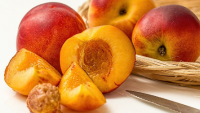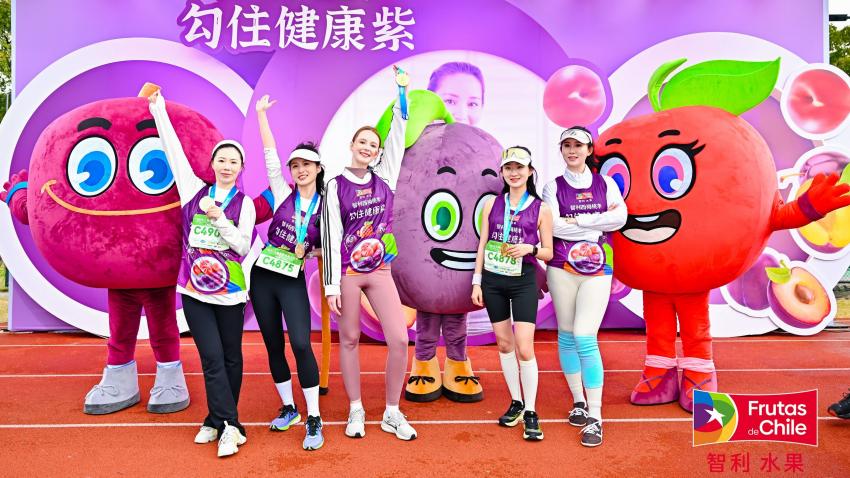You are here
Back to topAustralian Stonefruit Set for Exciting Export Season to China

 On November 9th, China and Australia signed a protocol granting market access for Australian plums, peaches, and apricots to China. Produce Report spoke with John Moore, CEO of Summerfruit Australia Ltd., to learn more about the impact this agreement might have on Australian stonefruit exports to China, in addition to new developments and expectations for the upcoming season.
On November 9th, China and Australia signed a protocol granting market access for Australian plums, peaches, and apricots to China. Produce Report spoke with John Moore, CEO of Summerfruit Australia Ltd., to learn more about the impact this agreement might have on Australian stonefruit exports to China, in addition to new developments and expectations for the upcoming season.

Growing Regions
South Australia was granted the most wide-ranging access of all of Australia’s states by the AQSIQ, as its geographic isolation from the rest of Australia in the form of several deserts effectively provides a natural barrier to fruit flies and other potential pests from Australia’s other regions. AQSIQ designated South Australia a ‘pest-free’ area, allowing nectarines, peaches, apricots, and plums from South Australia’s Riverland region to be exported directly to China.
Along with South Australia, orchards and packing houses from Victoria and parts of New South Wales registered in time for the 2017/2018 stonefruit export season. All four stonefruit will soon be able for export from Victoria and New South Wales to China, but the process will take roughly 1.5 days longer than in South Australia, as the fruit must be sent to Melbourne for fumigation prior to export; this applies to peaches, apricots, and nectarines for airfreight consignments, with plums to undergo in-transit cold treatment (ITCT). Western Australia, Queensland, and Tasmania have no registered stonefruit orchards for the current season, but all three regions plan to register for the 2018/19 season. Around 40 orchards are presently undergoing audits to achieve approval by the AQSIQ to send plums, peaches, and/or apricots to China this season, and the quality across all varieties of stonefruit is expected to be higher this year because of better environmental growing conditions.
Nectarines

After achieving market access in 2016, Australian nectarines had a mixed 2016/17 season due to poor weather conditions, which affected the sweetness of the crop. For the current 2017/18 season, nectarines have begun to arrive in China from Australia and these early exports already possess a better Brix level. According to Mr. Moore, the quality of these nectarines is expected to only increase, as Australia’s growing regions will enjoy warmer days and colder nights, ideal for fostering excellent sweetness levels in not only nectarines, but other stonefruit in general. “We expect there to be an exceptional quality of fruit coming out of Australia from mid-December all the way through to Chinese New Year this season.” However, Mr. Moore admitted that a consumer education campaign for nectarines in China was needed to educate consumers on how to properly eat, cook with, and store nectarines.
Plums

 Numerous varieties of Australian plums are expected to be available to Chinese consumers this year, such as many red, orange, white, dark, and green flesh varieties. Several specialty brands of club plums with strict intellectual property protection agreements will be exported to China, such as the Australian Queen Garnet plum, a ‘super-fruit’ which is highly medicinal and contains triple the amount of antioxidants of a normal plum. For 2017/18, Australian plums can only be shipped via sea, as the fumigation results required for air freight were not achieved this year. Nevertheless, Mr. Moore anticipates Australian plums to be quite popular in China this season due to the large number of interesting varieties available and Chinese consumer’s familiarity with plums.
Numerous varieties of Australian plums are expected to be available to Chinese consumers this year, such as many red, orange, white, dark, and green flesh varieties. Several specialty brands of club plums with strict intellectual property protection agreements will be exported to China, such as the Australian Queen Garnet plum, a ‘super-fruit’ which is highly medicinal and contains triple the amount of antioxidants of a normal plum. For 2017/18, Australian plums can only be shipped via sea, as the fumigation results required for air freight were not achieved this year. Nevertheless, Mr. Moore anticipates Australian plums to be quite popular in China this season due to the large number of interesting varieties available and Chinese consumer’s familiarity with plums.
Peaches and Apricots

 As with plums, Chinese consumer awareness of peaches and their association with longevity will serve to boost the popularity of imported Australian peaches this season. Because of their thin skin and delicate flesh, both peaches and apricots from the Riverland region in South Australia will be sent by air freight to China in a nearly-ripe state, so that when the fruit reaches the consumer, it is ready to be eaten. Mr. Moore emphasized to Produce Report the importance of educating distributors, importers, and other partners in China as to proper cold chain processes for ripe fruit to prevent bruising and preserve product quality for the consumer.
As with plums, Chinese consumer awareness of peaches and their association with longevity will serve to boost the popularity of imported Australian peaches this season. Because of their thin skin and delicate flesh, both peaches and apricots from the Riverland region in South Australia will be sent by air freight to China in a nearly-ripe state, so that when the fruit reaches the consumer, it is ready to be eaten. Mr. Moore emphasized to Produce Report the importance of educating distributors, importers, and other partners in China as to proper cold chain processes for ripe fruit to prevent bruising and preserve product quality for the consumer.
“Taste Australia” Retailer Program
Under the banner of “Taste Australia,” Horticulture Innovation Australia will upgrade the “Now in Season” program promoting Australian fresh summer fruit, joining other Australian Industries who will market dairy, meat, and wine also under the “Taste Australia” banner in overseas markets. The pilot retailer program for nectarines will be launched in China this season to facilitate increased collaboration between orchards in Australia and retailers in China. Three facilitators/importers spread across three key regions in China (Beijing, Shanghai, and Guangzhou/Shenzhen) will have direct links to Australian orchards and will be able to request specific amounts of nectarines from growers directly. Fruit under this program will be mostly shipped via air freight, inspected before export to China, and inspected again on arrival to China to guarantee that high-end retailers receive top quality fruit. Only nectarines will be available through this program initially, but from January to March 2018, small in-store retailer programs will be launched for plums, peaches, and apricots by Australian exporters.
Mr. Moore also stated that e-commerce channels such as FruitDay, Tmall, JD, and social media such as WeChat will be used for promotion and marketing this season, in addition to special channels established for the retailer program by YumSun, Joy Wing Mau, and China Marketing Solutions, who will serve as the major importers and distributors for this program.
Image Source:Summerfruit Australia


















Add new comment